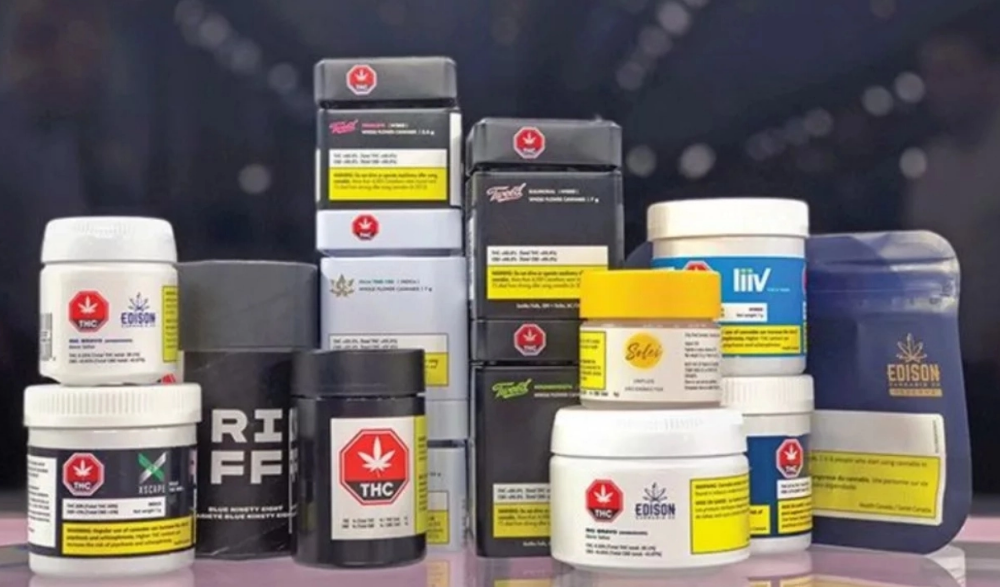Blogs
Fewer than 10% of Canadian cannabis licensees exited market, government report shows

Just under 10% of federal cannabis license holders in Canada have exited the market since legalization in October 2018, according to new government data.
The data suggests that industry predictions of a “rationalization,” or thinning out, among cannabis producers has not materialized, as new entrants far outpaced those exiting the hypercompetitive industry.
The data was released as part of the government’s public “engagement paper” for the mandated Cannabis Act review, which was initiated in September after an unexplained one-year delay.
The paper also asks a series of questions pertinent to the industry to collect feedback, which the government says will inform the legislative review of the law.
According to the data, roughly 95 cannabis license holders left the industry, representing 9.7% of licenses issued during that period.
Of those who exited the industry:
- 15 were micro license holders, a class of license limited to 200 square meters of growing canopy.
- 13 were sale-for-medical-purposes only.
- 67 were standard license holders, which face no canopy limits.
There are currently 920 active federal cannabis licenses.
The paper doesn’t say why the licensees left the market beyond “ongoing market corrections.”
But industry experts previously told MJBizDaily that cannabis businesses suffer from overtaxation across the supply chain from almost every level of government.
“In response to downward pressure on wholesale prices, license holders are seeking new investors and are restructuring in order to help them compete in an increasingly competitive market,” the paper says.
“Some license holders are exiting the industry altogether or are reducing the number of sites they operate.”
An MJBizDaily analysis found that the most profitable Canadian cannabis businesses are government-owned.
By contrast, private-sector profits have been few and far between.
Bigger producers, bigger problems?
The paper presented a rare government snapshot of Canada’s cannabis overproduction.
MJBizDaily reported that Canadian cultivators produced a record 561,459 kilograms – or about 618 tons – of dried cannabis last fall, bringing the total amount stored by licensed producers, wholesalers and retailers to 1.4 billion grams.
Producers also have destroyed roughly 900 million grams of cannabis since 2018.
Until now, data wasn’t available to answer exactly which companies were producing all that cannabis.
According to the paper, only 10 standard license holders accounted for 43% of all dried cannabis production in Canada between October 2019 and December 2021.
Another 56% came from 307 standard license holders.
About 178 micro licensees accounted for less than 1% of all cannabis production in the country.
Recreational cannabis sales reported to Health Canada show a similar trend.
Only 10 companies accounted for 66% of all legal sales, while another 200 accounted for one-third of all sales between October 2019 and December 2021.
Micro license holders accounted for 0.3% for all sales in the period.
Legal-market gains
Canada’s legal market is generally displacing the illicit market, the paper suggests, citing Statistics Canada data.
According to the data, by the fourth quarter of last year, legal sales were twice the size of the illegal market.
Combined medical and non-medical cannabis sales in legal channels reached 1.3 billion Canadian dollars ($950 million) in the fourth quarter of 2021, while transactions in the illicit market fell to approximately CA$660 million in the quarter.
“The primary focus of the government’s approach to combating the illegal market is to provide consumers with the ability to purchase cannabis from legal, regulated sources, it was understood that there would continue to be activity outside of the legal framework,” the paper notes.
“The Cannabis Act provides law enforcement with the authority to take action against illegal cannabis activity.”
In other words, it was never expected that the illicit market would disappear quickly after legalization.
Just how much of the illicit market remains?
Statistics Canada estimates that consumption from illicit sources totaled CA$2.8 billion in 2021.
Canadian cities have experienced a sharp reduction of unlicensed cannabis stores, which had been prolific in some municipalities before prohibition was brought to an end in 2018.
However, illicit sellers are prolific online.
“Policing online activity is complicated – a website can be created in one country, hosted in another, on a domain name registered in yet a third, while selling a product in multiple jurisdictions,” according to the paper.
“Additionally, websites can be set up with ease, and can replace those that have been seized or shut down by law enforcement.”
The paper notes that “illegal websites are particularly concerning from a public health perspective as they provide an easy pathway for youth to access cannabis.”
Other observations from the paper:
Smoking remained by far the most common consumption method.
Approximately 3,200 cannabis retail stores opened across Canada.
The average price per gram of legal recreational cannabis had fallen to CA$5.66 as of December 2021.
Only six cannabis licenses have been suspended, while three were revoked.
As of December 2021, just under 300,000 patients were registered to access medical cannabis.
Micro license holders account for 38% of all federal licensees. The number grew from 20 at the start of 2020 to 340 as of July 31, 2022.
Source: https://mjbizdaily.com/fewer-than-10-percent-of-canadian-cannabis-license-holders-exited-market/